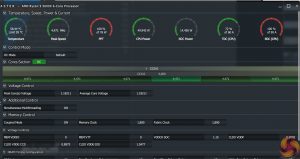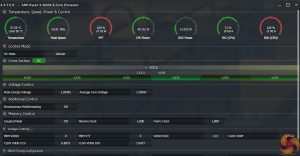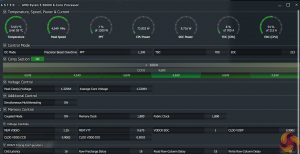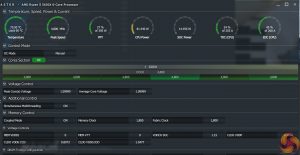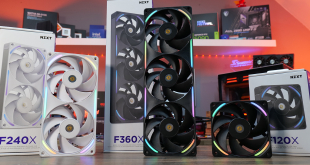Frequency, especially in all-core scenarios, was historically the area where people found issue with Ryzen 3000X/XT and Zen 2. Intel managed to push significantly higher clock speeds from its Skylake-based chips on the heavily refined 14nm process technology. That’s especially true when looking at all-core operating frequencies for Intel versus Zen 2 in power unlimited scenarios.
As such, we were hoping to see the new, optimised Ryzen 5000 chip operate at higher all-core frequencies when running at stock, PBO, and when overclocked.
Stock-Clocked Operating Frequencies:
We see the 5600X hitting around 4.45-4.55GHz all-core frequency in the demanding Cinebench and Blender workloads. This clock speed value holds up well using standard AIO cooling but there is clearly thermal headroom spare for lower spec coolers. It is the power and current limits that cap the speed, so PBO and manual overclocking clearly give the chip more room to push.
We observed clock values as high as 4650MHz when running the Cinebench 1T test, even if only for small periods of time. As with other Ryzen 5000 chips, this is above the quoted boost frequency and represents a solid result.
Ryzen 5 5600X PBO Overclocking:
We did a quick test on PBO overclocking and found it to run our chip at around 4.65GHz all-core or single core. This is a good enough result for a quick, easy, and stable performance bump.
Ryzen 5 5600X Manual Overclocking:
We pushed the Ryzen 5 5600X to an impressive 4.8GHz all-core frequency using our X570 motherboards. This used a 1.325V UEFI setting that was a little over 1.3V delivered in operation. We could probably tweak the voltage a little lower, but temperatures and power were fine for our testing.
Overclocking Outcome:
4.8GHz all-core is a highly impressive result as it goes beyond the maximum boost frequencies quoted by AMD and should therefore represent no performance loss in single threaded or lightly threaded workloads.
 KitGuru KitGuru.net – Tech News | Hardware News | Hardware Reviews | IOS | Mobile | Gaming | Graphics Cards
KitGuru KitGuru.net – Tech News | Hardware News | Hardware Reviews | IOS | Mobile | Gaming | Graphics Cards


